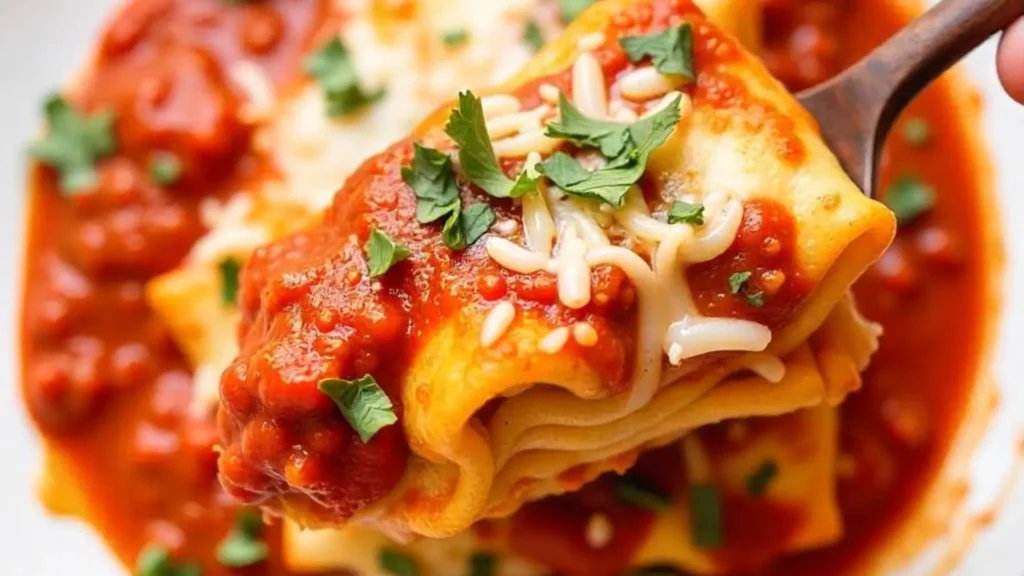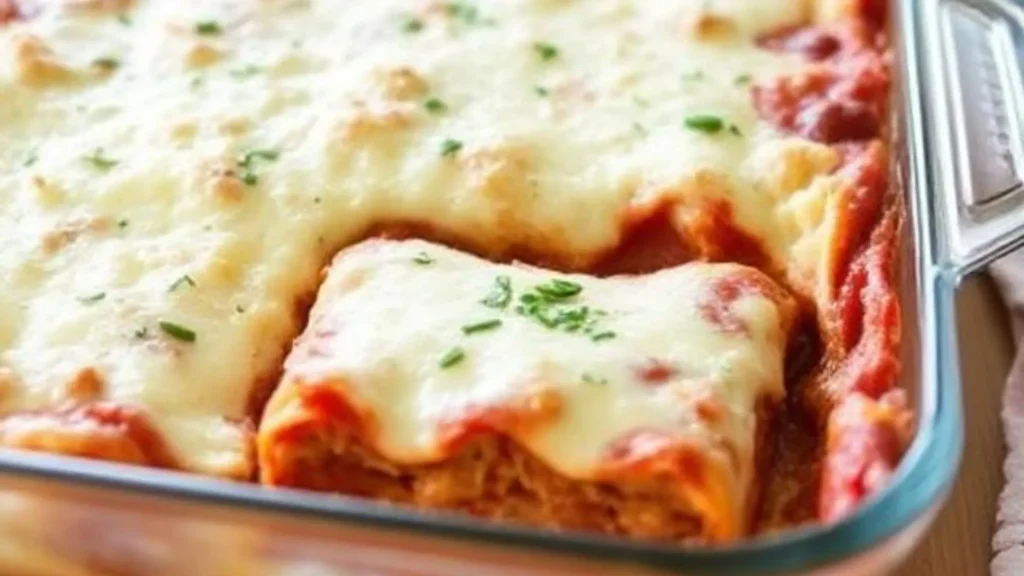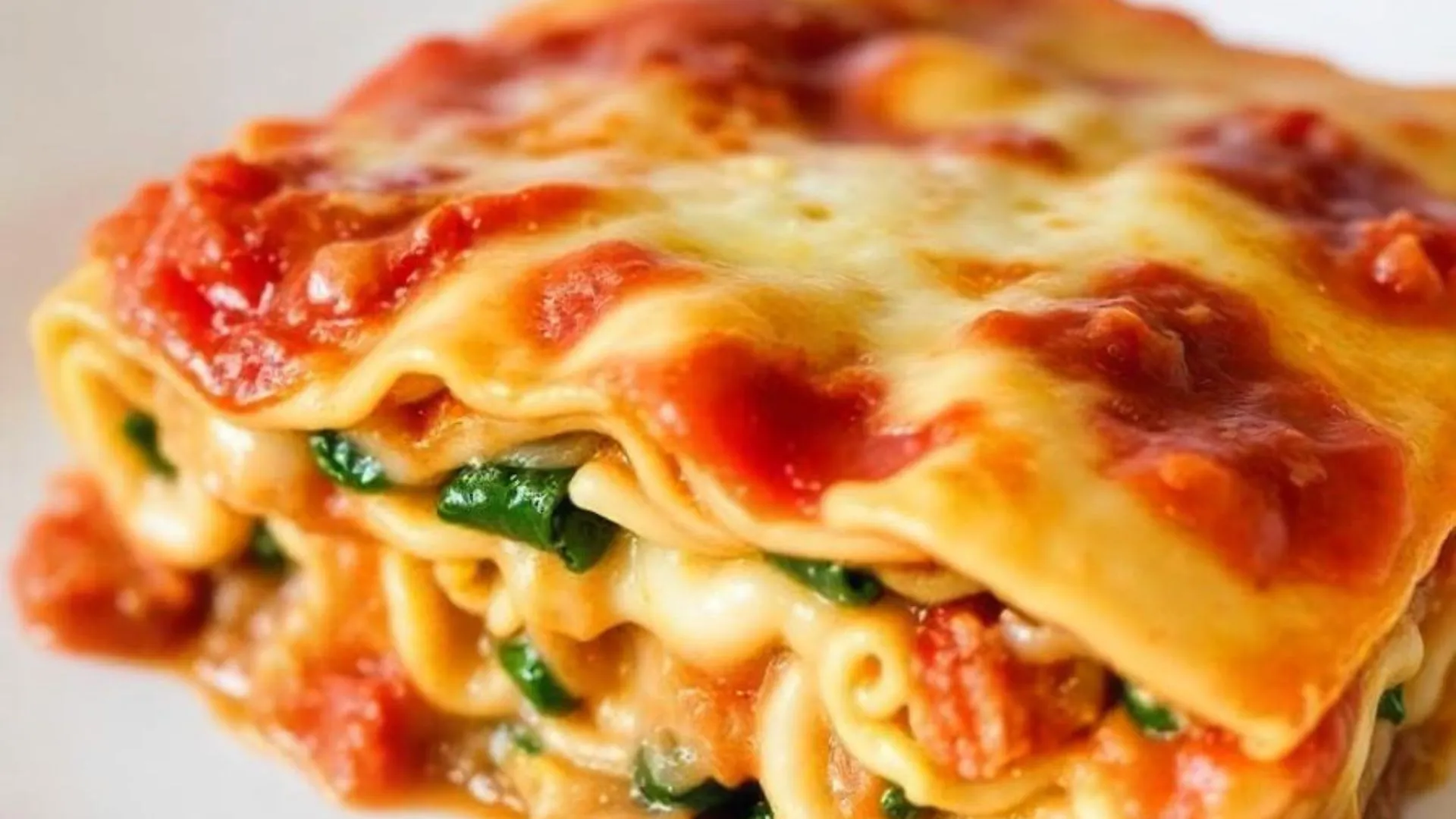Lasagna is one of the most beloved classic Italian dishes, known for its rich layers of pasta, meat sauce, and gooey melted cheese. Whether you’re cooking for a family gathering, a cozy dinner, or meal prepping for the week, a well-made lasagna is a crowd-pleaser.
But what makes a perfect lasagna? Is it the homemade tomato sauce, the blend of cheeses, or the way it’s layered and baked to perfection? In this guide, we’ll walk you through the best lasagna recipe, covering everything from choosing the right ingredients to step-by-step assembly and baking techniques.
This step-by-step guide will help you:
✔️ Pick the best pasta, sauce, and cheese combinations.
✔️ Master the layering technique for a rich and creamy texture.
✔️ Learn baking tips for the perfect golden-brown, bubbly lasagna.
✔️ Discover pro tips and variations for a unique twist on the classic recipe.
Whether you’re a beginner cook or an experienced home chef, this guide will ensure you make the best lasagna every time. Let’s get started!
Table of Contents
Essential Ingredients for the Best Lasagna Recipe
To make the perfect lasagna, selecting high-quality ingredients is key. Each layer plays a crucial role in the flavor, texture, and overall taste of the dish. Let’s break down the essential ingredients:
Pasta: Lasagna Noodles – Fresh vs. Dried
Lasagna noodles form the foundation of the dish, so choosing the right type can make a big difference.
- Fresh Lasagna Noodles – These are typically softer and cook faster since they contain more moisture. They give the lasagna a silky texture and blend seamlessly with the sauce. If you have time, making homemade pasta can elevate the dish even further.
- Dried Lasagna Noodles – More commonly used, these are sturdier and hold their shape well, especially for thicker, layered lasagna. They require boiling before assembling unless using oven-ready (no-boil) noodles, which save time and absorb the sauce as they cook.
- Which One to Choose? If you prefer convenience, go with no-boil dried noodles. For a restaurant-style texture, fresh pasta is the best option.
Sauce: Tomato Sauce, Ground Beef, and Italian Herbs
The meat sauce is the heart of lasagna, adding richness and depth of flavor.
- Tomato Sauce: Use a high-quality canned or crushed tomato sauce for a rich, tangy base. You can also blend in tomato paste for a thicker consistency.
- Ground Beef: The classic choice for a hearty lasagna, ground beef provides a savory and meaty texture. You can also use ground turkey or Italian sausage for variety.
- Italian Herbs: A blend of oregano, basil, thyme, and rosemary enhances the sauce. For extra depth, try adding a splash of red wine while simmering.
- Cooking Tip: Let the sauce simmer for at least 30 minutes to allow the flavors to meld together beautifully.
Cheese: Ricotta, Mozzarella, and Parmesan for Layers
A great lasagna is incomplete without cheese! The combination of these three varieties creates a creamy, melty, and slightly tangy flavor.
- Ricotta Cheese: This adds a smooth and creamy texture to the layers. Mixing it with eggs and herbs makes it even more flavorful.
- Mozzarella Cheese: The star of the show, mozzarella melts beautifully, giving lasagna its gooey and stretchy texture. Use fresh mozzarella for an even richer taste.
- Parmesan Cheese: Adds a sharp, nutty flavor to balance the richness of the ricotta and mozzarella. Always use freshly grated Parmesan for the best taste.
Extras: Garlic, Olive Oil, Eggs, and Seasoning for Added Flavor
Small additions can elevate the taste of your lasagna significantly.
- Garlic & Olive Oil: These ingredients enhance the aroma and bring out the flavors of the sauce. Sautéing garlic in olive oil before adding tomatoes creates a more robust and deep taste.
- Eggs: Mixing eggs into the ricotta cheese helps bind the layers together, preventing a runny lasagna.
- Seasonings: Don’t forget salt, black pepper, crushed red pepper, and a pinch of nutmeg to balance the flavors.
Preparing the Perfect Lasagna Sauce
Perfecting the Meat and Sauce for the Best Lasagna
A great lasagna starts with a rich, flavorful meat sauce that binds the layers together. Here’s how to make it tasty, well-balanced, and packed with depth.
Cooking the Meat: Ground Beef or Turkey for a Lighter Option
The protein in lasagna provides a savory, hearty texture that complements the cheese and sauce.
- Ground Beef: The classic choice for lasagna, it adds a deep, meaty flavor. Opt for 80/20 ground beef (80% lean, 20% fat) for the best balance of taste and moisture.
- Ground Turkey: For a leaner alternative, ground turkey is a great substitute. It absorbs flavors well and keeps the dish lighter without compromising texture.
- Cooking Tip: Brown the meat in a hot pan with a bit of olive oil, breaking it apart with a spatula. Cook until fully browned and slightly crispy for extra flavor. Drain excess fat to avoid a greasy lasagna.
Simmering the Tomato Sauce: Enhancing Flavors with Garlic and Italian Seasoning
The sauce is what makes lasagna juicy and flavorful. Taking time to simmer it properly results in a richer, more aromatic dish.
- Garlic & Onion: Start by sautéing minced garlic and finely chopped onion in olive oil until fragrant. This adds depth and natural sweetness to the sauce.
- Tomatoes: Use high-quality crushed tomatoes, tomato sauce, and tomato paste for a well-rounded, thick sauce. Tomato paste helps intensify the richness.
- Italian Seasoning: A blend of oregano, basil, thyme, and rosemary gives the sauce its authentic Italian taste. Adding a bay leaf while simmering enhances the aroma.
- Simmering Tip: Let the sauce cook on low heat for at least 30 minutes to meld the flavors together. Stir occasionally to prevent burning.

Layering in Extra Flavor: Adding a Splash of Red Wine or Fresh Basil
Adding a few secret ingredients for a restaurant-quality lasagna can take your sauce to the next level.
- Red Wine: A small splash of dry red wine (like Chianti or Merlot) adds a deep, complex flavor to the sauce. Let it cook down for a few minutes to remove the alcohol while keeping the richness.
- Fresh Basil: Stirring in fresh basil leaves at the end of cooking brings freshness and lightens the sauce.
- A Dash of Sugar: If your tomatoes taste too acidic, adding ½ teaspoon of sugar balances the flavors.
Final Tip: Letting the Sauce Rest
Before assembling the lasagna, let the sauce cool for 10-15 minutes to thicken slightly. This prevents the layers from becoming too watery when baked.
With these pro tips, your lasagna will have a perfectly seasoned, thick, and flavorful sauce—the key to an unforgettable dish! 🍅🔥
How to Assemble Lasagna Step-by-Step
A well-layered lasagna is all about balanced textures, even distribution of ingredients, and proper layering technique. Follow these steps for a delicious, evenly baked lasagna.
Step 1: Boiling and Prepare the Lasagna Noodles
Lasagna noodles serve as the foundation of the dish, so they must be cooked just right.
- Choosing the Right Noodles: You can use traditional boiled lasagna noodles or oven-ready (no-boil) noodles for convenience.
- Boiling Traditional Noodles:
- Bring a large pot of salted water to a boil.
- Cook the noodles for 1-2 minutes less than the package instructions (they will continue cooking in the oven).
- Stir occasionally to prevent sticking.
- Draining & Prepping: Drain the noodles and lay them flat on a baking sheet or parchment paper to prevent clumping. Lightly coat with olive oil to keep them from drying out.
Step 2: Spreading the First Layer of Sauce in the Baking Dish
A solid base of sauce prevents sticking and ensures every bite is flavorful.
- Grease the bottom of your 9×13-inch baking dish with a light coat of olive oil or cooking spray.
- Spread a thin, even layer of sauce (about ½ cup) at the bottom—this prevents the noodles from sticking and creates a moist foundation.
- If using no-boil noodles, add a little extra sauce to ensure they absorb enough moisture while baking.
Step 3: Layering Noodles, Cheese, and Sauce for the Perfect Texture
Now it’s time to build those delicious, creamy layers!
- First Layer: Lay down a row of lasagna noodles, slightly overlapping them.
- Cheese Mixture: Spread an even layer of ricotta cheese mixture (ricotta, egg, parmesan, and herbs).
- Sauce: Add a generous scoop of meaty tomato sauce, spreading it evenly over the cheese.
- Mozzarella: Sprinkle a handful of shredded mozzarella to add gooey, stretchy layers.
Step 4: Repeating Layers and Topping with Mozzarella & Parmesan
- Repeat the process until you reach the top of the dish, layering noodles, ricotta, sauce, and mozzarella.
- The final top layer should be a generous amount of shredded mozzarella and grated parmesan for that crispy, cheesy crust.
- Cover the lasagna loosely with foil to prevent burning while baking.
Final Tip: Let the Lasagna Rest
After baking, let the lasagna rest for at least 10-15 minutes before slicing. This helps the layers set properly and makes it easier to serve.
Baking and Serving the Perfect Lasagna
Preheating the Oven: Best Temperature for Even Cooking
Preheating the oven is crucial in ensuring that your lasagna cooks evenly. Allowing the oven to reach the proper temperature before placing the lasagna inside will allow the noodles, sauce, and cheese to cook uniformly. A good temperature for lasagna is typically 375°F (190°C). This heat allows the lasagna to bake slowly enough that the flavors can meld together while the top layer of cheese becomes golden and bubbly. If the oven is too hot, the cheese may burn before the noodles are fully cooked; if it’s too low, it might not brown nicely or fully heat through.
Baking Time: Achieving a Golden, Bubbly Top
To achieve the perfect lasagna, baking time plays a key role. At 375°F, most lasagna recipes will take about 45 to 60 minutes. To get that irresistible golden, bubbly top, it’s essential to bake the lasagna uncovered for at least the last 10–15 minutes of the cooking time. The cheese on top should melt and develop a nice brown color, while the sauce underneath becomes thick and flavorful. If you prefer an extra crispy top, you can turn on the broiler for 2–3 minutes at the end, but keep a close eye on it to avoid burning.

Resting the Lasagna: Why Letting It Sit Enhances Flavor
Once you take the lasagna out of the oven, it’s important to let it rest for 10 to 15 minutes before slicing. This resting period allows the sauce and cheese to firm up, making it easier to cut clean, perfect slices. Additionally, the flavors continue to blend and settle during this time, resulting in a more cohesive dish. If you cut into it right away, the sauce might be too runny, and the layers might collapse. By giving it time to rest, the lasagna will hold its shape, and every bite will be packed with the perfect combination of flavors and textures.
Serving Suggestions: Pairing with Garlic Bread or a Side Salad
Lasagna is a rich and hearty dish, so pairing it with lighter sides helps balance the meal. Garlic bread is a classic and beloved choice, offering a crunchy contrast to the soft, cheesy layers of the lasagna. You can also serve a refreshing side salad with crisp greens, such as arugula or spinach, topped with a tangy vinaigrette. The acidity from the salad will cut through the richness of the lasagna, providing a pleasant balance of flavors. For an extra touch, sprinkle some parmesan over the salad or bread to tie everything together with a hint of cheesiness.
Pro Tips and Variations for a Flavorful Lasagna
Vegetarian Option: Replacing Meat with Spinach, Zucchini, or Mushrooms
For a delicious vegetarian lasagna, swap out the meat for hearty vegetables. Spinach adds a mild, slightly earthy taste and can be used fresh or frozen—just be sure to squeeze out excess moisture from frozen spinach to prevent sogginess.
Zucchini is another great alternative. Thinly sliced zucchini can replace noodles or be layered alongside them for a light, fresh texture. Mushrooms, especially cremini or portobello, bring a rich umami flavor that mimics the depth of meat. Sautéed mushrooms can serve as the base for your sauce, adding complexity and heartiness. Combining these vegetables creates a satisfying, colorful, and nutritious vegetarian lasagna packed with flavor.
Cheese Lover’s Twist: Adding Extra Creamy Béchamel Sauce
For those who can’t get enough cheese, a creamy béchamel sauce takes lasagna to a whole new level of indulgence. Made from butter, flour, and milk, this smooth, rich sauce complements both tomato sauce and cheese beautifully.
For an extra cheesy kick, stir in grated Parmesan or a bit of mozzarella to the béchamel, creating a velvety texture with added depth. Pouring this sauce between the pasta and cheese layers enhances creaminess, providing a luxurious contrast to the tangy tomato sauce and crispy, golden cheese topping.
Gluten-Free Alternative: Using Gluten-Free Pasta or Zucchini Sheets
If you have gluten sensitivities or dietary restrictions, there are excellent alternatives to traditional pasta. Gluten-free lasagna noodles—made from rice flour, corn, or quinoa—offer a texture similar to regular pasta and are widely available.
For a low-carb, gluten-free option, use zucchini sheets instead of pasta. Thinly slice the zucchini and either roast or salt it beforehand to remove excess moisture, preventing a watery lasagna. This alternative keeps the dish light and fresh while maintaining all the delicious flavors. You can also explore rice noodles or other gluten-free pasta varieties for added versatility.
Storage & Reheating Tips: Best Ways to Keep Leftovers Fresh
Lasagna is perfect for meal prep and makes excellent leftovers. To store it properly, allow it to cool completely before transferring it to an airtight container or wrapping it tightly in plastic wrap and aluminum foil.
- Refrigeration: Keeps for 3–4 days.
- Freezing: Wrap tightly in plastic wrap and aluminum foil or use a freezer-safe container to prevent freezer burn. It will last for 2–3 months.
When reheating:
- Oven: Bake at 350°F (175°C) for 20–25 minutes if refrigerated, or about 45 minutes if frozen (cover with foil to prevent drying out).
- Microwave: Ideal for individual portions but may not retain the crispy, bubbly cheese topping as well as oven reheating.
Follow these tips and variations to customize your lasagna for any preference while keeping it fresh and delicious!
Conclusion
Making the best lasagna is all about layering flavors, choosing quality ingredients, and giving it time to bake to perfection. By preheating the oven, carefully baking to achieve that golden, bubbly top, and letting it rest to enhance the flavor, you’re sure to create a dish that everyone will love. Whether you’re making a classic version, going vegetarian, or adding a creamy béchamel twist, there are endless ways to personalize this dish.
I encourage you to give this recipe a try and share your experience! What variations have you tried or want to experiment with? I’d love to hear from you—leave a comment below and let me know your favorite lasagna twist!

